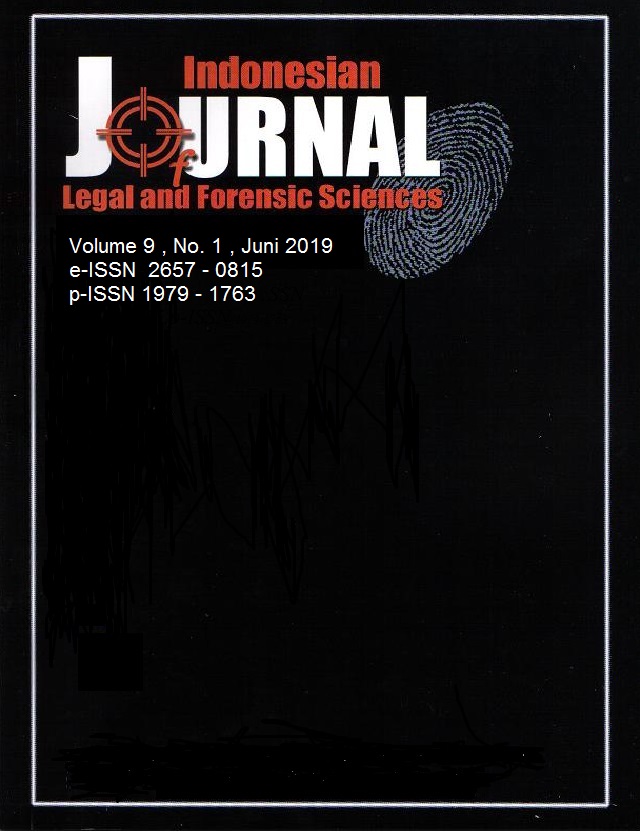KASUS KEMATIAN AKIBAT DICHLORVOS DAN PHENTHOAT
Abstract
Dichlorvos and phenthoat are organophosphate group pesticides which have toxic effects on humans and can cause fatal deaths. Suicide cases using organophosphate pesticides (dichlorvos and phenthoat) are one of the postmortem toxicology analysis studies. As a forensic toxicologist, competency is needed to be able to handle suicide deaths that are thought to be caused by dichlorvos and phenthoat. Handling suicides due to dichlorvos and phenthoate is done from sample preparation, screening tests, assurance tests, determination, and data interpretation. Forensic toxicology analysis in the case showed that high concentrations of dichlorvos and phenthoate were found to have toxic effects on the victim's body. Based on the toxicological analysis, it can be concluded that it is true that the victim died from organophosphate poisoning (dichlorvos and phenthoat).
Downloads
References
[2]. Lee M. S., Kerns E. H.. 1999. LC/MS Applications In Drugs Development. Mass Spectrometry Reviews. Vol.18 (3 ): 187-279.
[3]. Nara, A., C. Yamada, T. Kodama, K. Saka, dan T. Takagi. 2018. Fatal Poisoning with Both Dichlorvos and Phenthoate. Journal of Forensic Sciences: 1-4.
[4]. Moffat, A. C., M. D. Osselton and B. Widdop. 2005. Clarke’s Analysis of Drugs and Poisons. Pharmaceutical Press.
[5]. Shimizu K et al. 1996. Tissue distribution of DDVP after fatal ingestion. Forensic Sci Int 83:61–66.
[6]. Abe E et al. 2008. A fatal dichlorvos poisoning: concentrations in biological specimens. J Forensic Sci 53: 997–1000.
[7]. Morgan, D.P. 1982. Recognition and Management of Pesticide Poisonings. Washington: U.S. Government Printing Office.
[8]. Kawabata, S., Hayasaka M., Hayashi H., Sakata M., Hatakeyama Y., dan Ogura N. 1994. Phenthoate metabolites in human poisoning. Journal of toxicology. Clinical toxicology. 32 (1): 49-60.
[9]. Wirasuta, I M. A. G. 2008. Analisis Toksikologi Forensik dan Interpretasi Temuan Analisis. Indonesian Journal of Legal and Forensic Sciences, Vol. 1(1).
[10] PANAP. 2013. Kasus Keracunan Pestisida. Diakses 5 Maret 2019 http://www.who.imt/mental_health/prevention/suicede/pesticides.



















